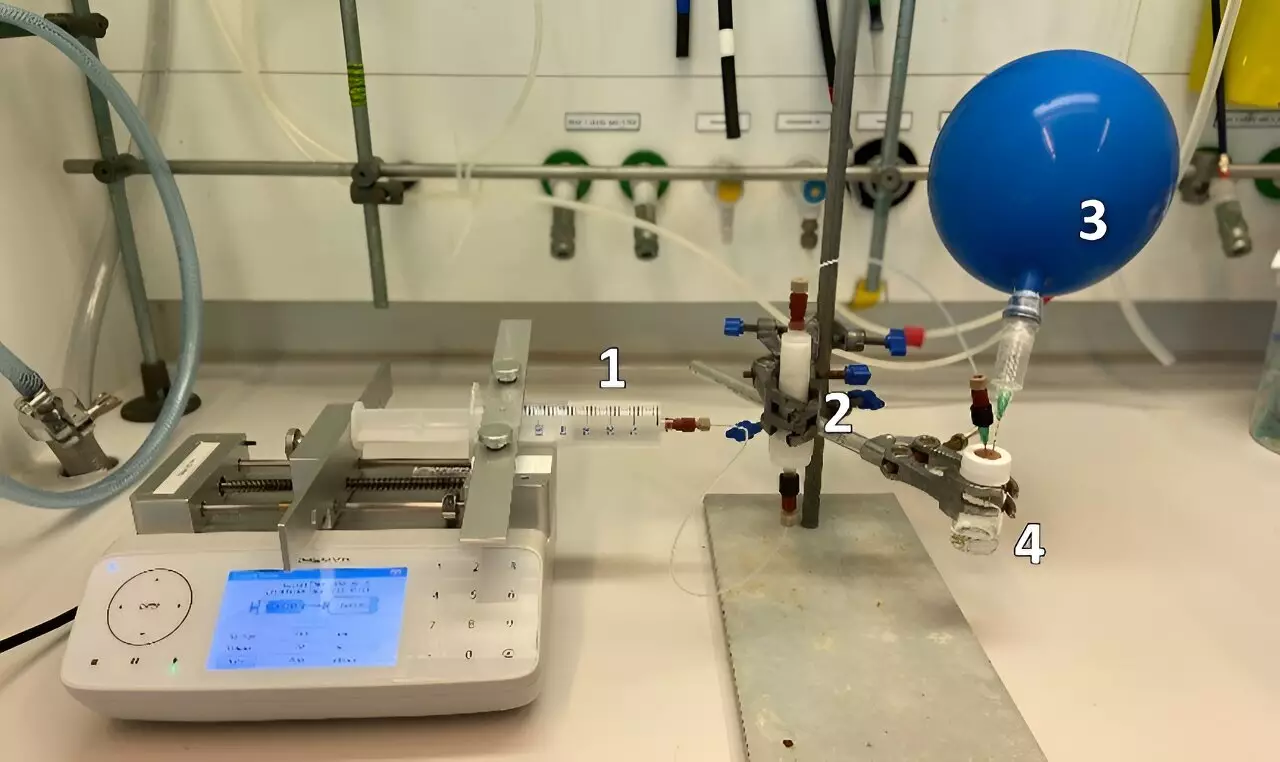The recent breakthrough in organic synthesis at the University of Amsterdam has paved the way for a more environmentally friendly method to attach a trifluoromethyl group to molecules. This method, developed by the Flow Chemistry group at the Van ‘t Hoff Institute for Molecular Sciences, eliminates the need for PFAS reagents and offers a safer and more controlled approach to chemical reactions.
The trifluoromethyl group plays a crucial role in the synthesis of pharmaceutical and agrochemical compounds by enhancing hydrophobicity and increasing metabolic stability. This, in turn, improves the efficacy of the compounds and reduces the required dosage or concentration for desired effects.
One of the key highlights of this new synthesis protocol is its PFAS-free nature, using only cesium fluoride salt as the fluorine source. This makes the process more environmentally friendly and aligns with the growing need for sustainable practices in chemical synthesis.
The innovative microfluidic flow module enables the generation of reactive N-, S-, and O-CF3 anions in a packed bed flow reactor. This efficient process allows for the fluorination of precursors with high efficiency due to the improved mixing of organic intermediates and the high surface area of the salt in the reactor.
The integration of an anion generating module with a downstream reaction module provides a streamlined platform for the derivatization of molecules bearing CF3 motifs. This not only enhances the properties of the resulting products but also ensures safety by containing all intermediates within the microfluidic system.
The impact of this new synthesis protocol extends beyond the realm of organic chemistry. By enhancing the properties of pharmaceutical drugs, this method has the potential to improve safety and sustainability in the production processes of new drugs. The combination of various anions with a range of substrates opens up possibilities for the synthesis of multiple fluorinated products with relevance to pharmaceutical and agrochemical industries.
The development of this revolutionary fluorination method marks a significant advancement in the field of organic synthesis. By offering a safer, more environmentally friendly approach to attaching a trifluoromethyl group to molecules, this method has the potential to shape the future of pharmaceutical and agrochemical compound synthesis. Its versatility, efficiency, and safety features make it a promising tool for researchers in both academic and industrial settings.


Leave a Reply